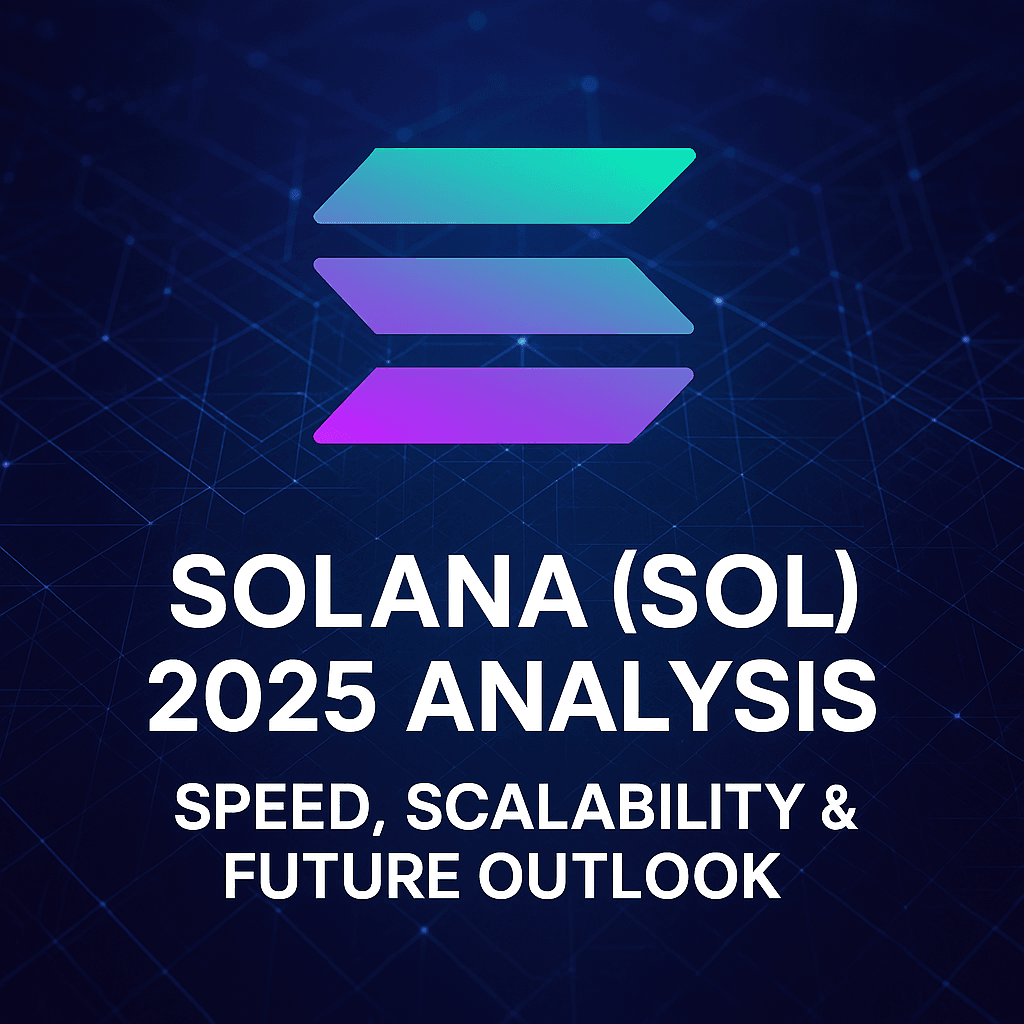Introduction
In the fast-paced blockchain industry, Solana (SOL) has consistently captured attention as one of the fastest and most innovative platforms. As we navigate through 2025, the big question arises: Is Solana still a top blockchain, and is it a good investment for the future?
In this comprehensive Solana fundamental analysis, we’ll explore its technological strengths, ecosystem growth, upcoming upgrades like Firedancer, and how it stands against competitors like Ethereum and Avalanche.
What is Solana?
Launched in March 2020 by Anatoly Yakovenko, Solana is a high-performance, permissionless blockchain designed for decentralized applications (dApps) at massive scale. Its unique Proof-of-History (PoH) consensus, combined with Proof-of-Stake (PoS), allows Solana to achieve unmatched transaction speeds and low transaction costs.
Unlike traditional blockchains, Solana timestamps transactions before they enter the consensus layer, drastically boosting speed and throughput.
Solana’s Core Strengths in 2025
1. High Transaction Speed and Scalability
Solana can handle over 65,000 transactions per second (TPS), with ~400 milliseconds block finality, and near-zero fees.
This scalability makes it ideal for high-frequency applications like DeFi, NFTs, and blockchain gaming.
2. Massive Developer Adoption
With over 2,500+ monthly active developers, Solana ranks second only to Ethereum in developer activity. Hackathons, grants, and venture investments have fueled dApps such as Magic Eden (NFTs), Jupiter (DeFi aggregator), and Solend (lending).
3. Vibrant DeFi and NFT Ecosystem
Despite past market turbulence, Solana’s DeFi Total Value Locked (TVL) surged past $3 billion in early 2025.
It also remains one of the top blockchains for NFT launches, with marketplaces like Magic Eden thriving.
4. Strategic Partnerships and Institutional Backing
Major firms including Visa, Shopify, and Circle have integrated Solana for payments and stablecoin settlements. Top VCs like a16z and Jump Crypto continue to fund Solana-based projects.
Challenges Facing Solana
1. Network Stability Issues
Solana’s past network outages raised concerns. However, with the rollout of the Firedancer validator client, developed by Jump Crypto, network reliability is expected to improve drastically by late 2025.
2. Strong Competition
Solana faces stiff competition from Ethereum (especially with Layer 2 scaling solutions), Avalanche, Sui, and modular blockchain ecosystems like Celestia.
3. Centralization Concerns
Higher hardware requirements for validators and initial token distribution concentrated among insiders have sparked debates over Solana’s decentralization compared to Ethereum.
Solana Tokenomics Overview
| Aspect | Details |
|---|---|
| Token Name | Solana (SOL) |
| Total Supply | ~568 million SOL |
| Circulating Supply | ~440 million SOL (April 2025) |
| Inflation Rate | ~5% (decreasing yearly) |
| Staking Rewards | ~5-7% annually |
| Major Use Cases | Transaction fees, staking, DeFi collateral, governance |
Solana features a semi-deflationary model where part of the transaction fees are burned, while new tokens are minted at a declining inflation rate.
Upcoming Developments and Future Outlook
- Firedancer Launch (Q4 2025): Expected to eliminate network outages and boost throughput up to 1M TPS.
- Solana Mobile Stack (SMS): With the Saga smartphone, Solana leads the mobile Web3 revolution.
- Real-World Assets (RWA) Tokenization: Solana is moving into real estate, stock, and bond tokenization through partnerships.
- AI and DePIN Projects: Integration of AI applications and decentralized physical networks on Solana is gaining momentum.
How Does Solana Compare to Ethereum and Avalanche in 2025?
| Feature | Solana (SOL) | Ethereum (ETH) | Avalanche (AVAX) |
|---|---|---|---|
| Consensus Mechanism | Proof-of-History + PoS | Proof-of-Stake | Snowman + PoS |
| Transactions per Second | 65,000+ TPS | 15–30 TPS (Layer 1) | 4,500+ TPS |
| Avg. Transaction Fee | <$0.001 | ~$1+ (Layer 1) | ~$0.01 |
| Finality Time | ~0.4 seconds | ~15 seconds | ~2 seconds |
| Decentralization | Moderate | High | Moderate |
| Network Outages | Improving (with Firedancer) | Rare | Rare |
| Developer Activity Rank | #2 | #1 | #5–6 |
| Use Cases | DeFi, NFTs, Gaming, RWAs | DeFi, NFTs, Enterprise | DeFi, Tokenization, Subnets |
Solana Fundamental Rating (April 2025)
| Metric | Score (/10) |
|---|---|
| Technology | 9 |
| Developer Ecosystem | 9 |
| Adoption | 8 |
| Tokenomics | 8 |
| Community Strength | 8 |
| Competition Resistance | 7 |
| Network Reliability | 7 (improving with Firedancer) |
| Overall | 8.0 |
Final Verdict: Should You Invest in Solana in 2025?
With its rapid technological improvements, growing DeFi/NFT ecosystem, and the upcoming Firedancer upgrade, Solana maintains a strong position among Layer 1 blockchains.
However, investors should remain aware of risks around competition and decentralization. For those bullish on Web3, DeFi, NFTs, and real-world asset tokenization, Solana could offer significant upside potential in the coming years.
As always, diversify your portfolio and invest wisely.
Frequently Asked Questions (FAQs)
Q: Is Solana better than Ethereum?
A: Solana offers faster, cheaper transactions but Ethereum remains more decentralized and enterprise-focused. Both have their own strengths.
Q: Will Solana network outages continue?
A: The Firedancer upgrade launching in late 2025 aims to eliminate major outages.
Q: Is Solana a good long-term investment?
A: Solana’s fundamentals remain strong for long-term growth, but it’s important to manage risk due to competitive market dynamics.
Q: What makes Solana unique?
A: Solana’s Proof-of-History mechanism and lightning-fast scalability differentiate it from other blockchains.

